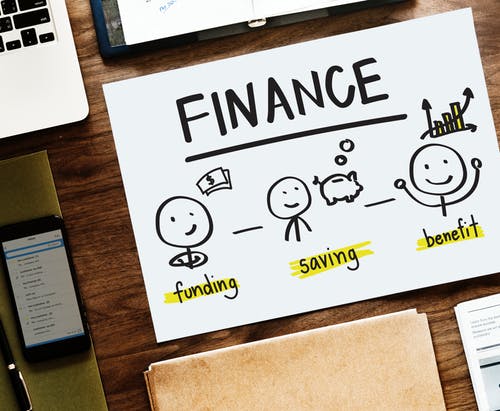Financial Literacy has been a topic of interest for some time. During a pandemic, we are facing life and death health issues and life changing financial stress that no one imagined in 2019. The two issues are intertwined and linked in ways that will be felt for years to come.

Curiosity drives me to consider how often is personal financial literacy taught? Consider the places where we learn: at home; in communities; in school; and when upon entering the workplace, are companies providing education about this vital topic from a personal vs. a corporate perspective?
Facing financial stress at home and in the workplace is taking a toll throughout our country today. What if we use this as an opportunity to teach people of all ages, from all places how to effectively manage money?
Understanding fundamentals of making money, managing money, growing money is a game changer across all segments of society regarding choices we have available pertaining to education, career choices, supporting ourselves, living independently and retiring.
Next Gen Personal Finance, a non-profit that provides a free online curriculum of personal finance courses geared to students. Over the years, their surveys have been an eye opener. Here is a link to their site showing information from their 2017 survey: https://www.visualcapitalist.com/americas-growing-financial-literacy-problem/
Since 2007, the National Foundation for Credit Counseling (NFCC) has surveyed Americans about their knowledge as it relates to financial literacy, as well as how they put that knowledge into practice when it comes to retirement, savings, credit card debt, student loan debt and more. Here is a link to the findings from the most recent survey in 2019: https://documentcloud.adobe.com/link/review?uri=urn:aaid:scds:US:cbf94755-17df-4251-a4fa-ad0dd16a7cd6

FINRA is a US government authorized not-for-profit organizations that oversees US broker-dealers. According to research from the FINRA Investor Education Foundation (FINRA Foundation) conducted in 2018-2019 “The State of U.S. Financial Capability,” found that key indicators of financial capability are no longer improving in step with the economy. And, this was before the pandemic! Here are the top findings from the survey conducted every three years. https://www.finra.org/investors/insights/finra-foundation-national-study-financial-prosperity-eludes-many-americans-despite-economy
- The divides between those prospering and those struggling are persisting or widening. Trends from the past four waves of the financial capability study show signs of widening or persistent gaps among certain groups on key measures of financial capability. While Americans, as a whole, have seen their ability to cover monthly expenses and bills improve since 2009, the 2018 data show that younger Americans, those without a college degree, African-Americans and those with lower incomes are struggling financially, calling into question the improved economy’s ability to work as needed for all.
- Americans are not saving. Despite improvements in the ability to make ends meet, there has not been an increase in the number of Americans’ saving. Nearly half of Americans have not set aside money to cover expenses for three months. Moreover, Americans are stressed about money. More than half (53 percent) of those surveyed reported that just thinking about their finances makes them feel anxious. These tips can help you boost your savings.
- A majority of Americans have not planned for retirement. More than half of Americans (54 percent) have not tried to determine what they need to save for retirement, and only 58% of Americans have a retirement account, based on the survey. The study reveals a gender gap for retirement preparedness may be widening in a way that favors men. Calculate how much will you need in retirement.
- High education costs are causing buyer’s remorse for many. Among Americans with student loans, nearly half (47 percent) wish they had chosen a less expensive college. Among those with student debt, a similar percentage (48 percent) is concerned they will not be able to pay off their loans, and many did not fully understand what they were getting into when they got their loans, the survey shows. Meanwhile, late loan payments are rising.
- Financial literacy has declined. Only 34 percent of respondents could answer at least four of five basic financial literacy questions on topics such as mortgages, interest rates, inflation and risk — compared to 42 percent in 2009. This drop in scores appeared most pronounced among younger Americans ages 18 – 34, who have had little exposure to high interest rates or inflation as adults. Test how you fare on the Financial Literacy Quiz.
- Financial education matters. Americans who have participated in a substantial amount of financial education are more likely to save and less likely to overdraw their checking accounts. Nearly half of Americans (49 percent) who have received more than 10 hours of financial education report spending less than they earn, compared with 36 percent of those people who received less than 10 hours of financial education.

Let’s be informed, reduce financial stress and increase financial literacy. These times are made for improvements moving forward. Look out for yourself and for others as we all continue to find ways to come through these stressful times.
If you or someone you know would benefit from working with me to review protective strategies in place for people, employees or companies, contact me via Email or check out the website @ The Living Planner for additional information.
Stay safe. Together, we can make a difference –Lynn
#LifeAndBusinessIntersect #CareForPeopleCareForBusiness #StepUpStepIn
